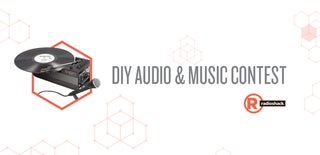Introduction: How to Give Your Guitar a Custom Paint Job
When I first started playing guitar, I played a cheap epiphone Les Paul p90. Later on, I bought an Ibanez Gio, which has been my go-to guitar since. One day, I got tired of the original red paint scheme of my Epiphone, so I decided to give it more character with a re-painting. So, this instructable will show you how to give your guitar a custom paint scheme. Please note that this will NOT work with a guitar that has a laminated body, aka "nitro", as the paint will chip off. But anyways, let's get started...
Step 1: Come Up With a Design Plan
Before re-painting something, I like to come up with a design plan so I have an idea of what I'm going for. For this project, I drew three designs: a flame pattern, a tribal pattern, and a gears pattern. I decided to do the flames pattern, so I drew a final design.
Step 2: Make a Design Template
Next, I laid my guitar on a sheet of drawing paper and traced around the body. Then I drew in the design, and cut out the paper to make a template sheet. I then laid the sheet on top of the guitar to see if it was to scale.
Step 3: Prepare the Guitar for Painting
Next, I used some masking tape to firmly attach my template to the guitar body. Then I used some 100 grit sandpaper to make it ready to paint again. (If you don't sand it, you run the risk of paint chipping off later. I know it's hard to scuff up your guitar, but trust me, it'll be worth it in the end. :) Once I brushed the dust away from sanding, the guitar was ready to paint.
Step 4: Painting the Guitar
To paint the guitar, I used some black, latex canned paint, and gently brushed the area I wanted to paint using only downward strokes with the brush, to achieve a uniform stroke pattern. I did 3 coats for durability and finish.
Step 5: Touching Up the Paint Scheme
As you can see, once I peeled away the template, the flame edges were very rough, so I did some fine detailing with an artist's brush. Doing so makes a huge difference in finish quality, as you can see from the above pictures. (Note, the parts where the paint looks glossy is because it was still wet when I took this picture. Once it dried, it turned out perfectly even, as you'll see.)
Step 6: The Final Result
After letting the paint dry, here is my final result. I like it much better than the old "plain red" scheme. Of course, it still plays perfectly fine, and has no issues with functionality. Just as a side note, this is an older guitar of mine, and one I don't usually use. If you are considering trying to paint your guitar, I'd recommend first trying it with a guitar you use less, or if you only have 1 guitar, use a piece of wood for practice. Anyways, I hope you enjoyed this instructable, and as always, good luck!

Participated in the
DIY Audio and Music Contest













